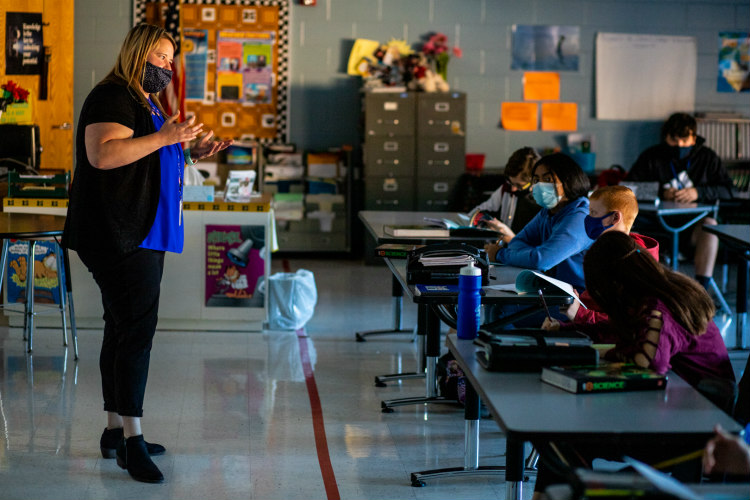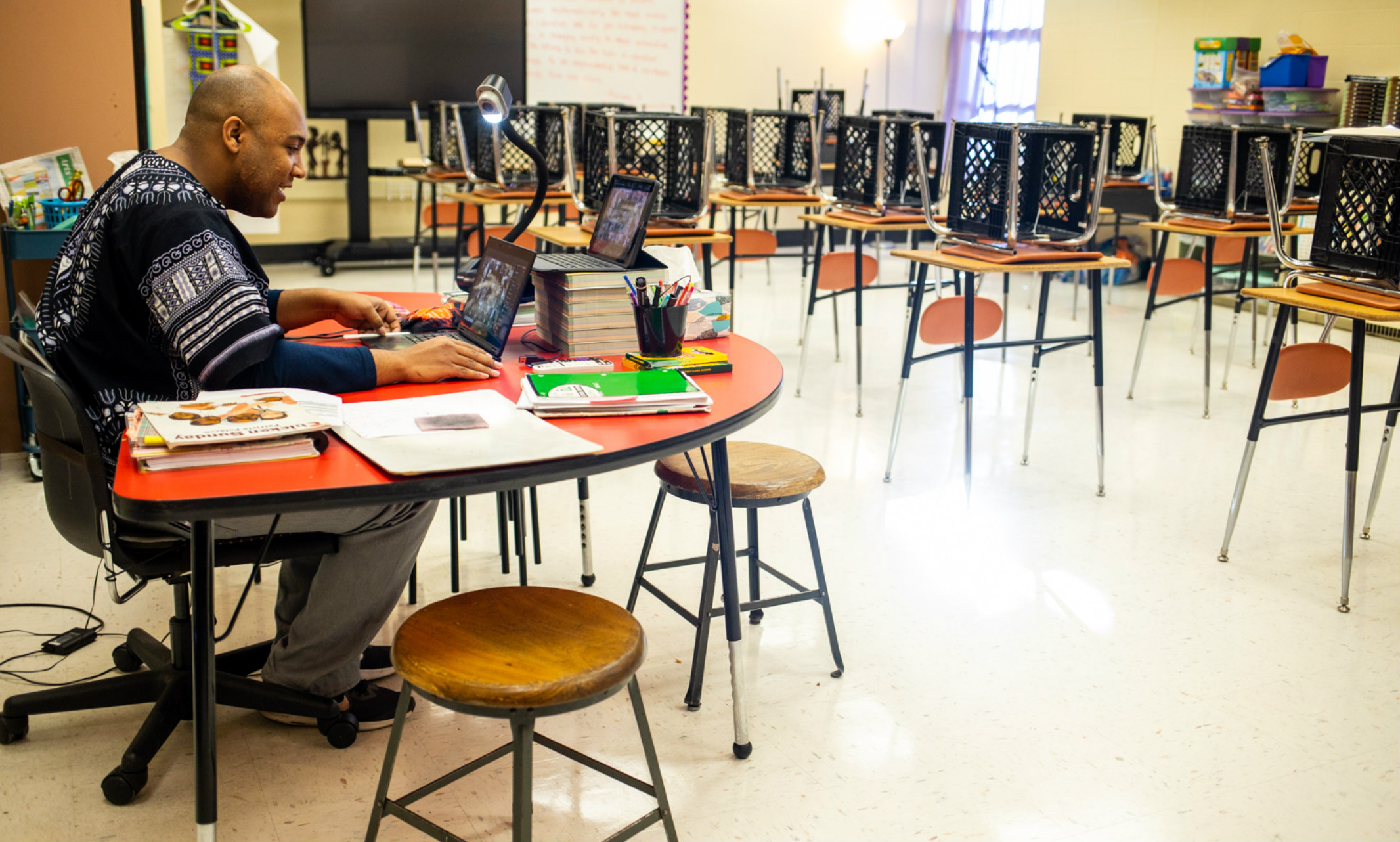The COVID-19 pandemic interrupted life as we knew it, caused the world to collectively pause and, eventually, shift to a new normal.
Its specific effects, however, are not universal. It has caused varying challenges for people of all generations, social classes and walks of life, especially teachers and children as the shift to online learning brought to light a new set of challenges — and opportunities.
We spoke to two of UMKC’s many alumni working to juggle different teaching formats, student needs, technology requirements and more in their classrooms about what the experience has been like — both for them and for their students.
Adapting to the new normal
For School of Education alumni Marquis Hall (B.A.’16; M.A. ’19) and Deborah Siebern-Dennis (B.A. ’05), the pandemic has created very different realities for their classrooms.
Hall teaches at African-Centered College Preparatory Academy, which uses African-based projects to provide a unique cultural education to students in Pre-Kindergarten through 8th grade. Located in the heart of the Kansas City, Missouri School District, the academy was 100% online in Fall 2020 due to COVID-19.
Though it’s been difficult for Hall’s students to be separated from their friends and in-person help, he says they’re staying resilient.
“They can do anything,” Hall says. “They grew up using technology, so some of these kids can use it better than their teachers!”
Siebern-Dennis is a 7th grade science teacher at Bode Middle School in St. Joseph, Missouri, outside Kansas City’s urban core. As of late 2020, her classroom was in a hybrid model, meaning that in any given class period, she was teaching half of her students in person, with the other half tuning in online via Zoom.
“The biggest struggle has been to try to find a balance between giving my in-class students the attention they need while also providing my online students the same amount of attention during the same class period,” Siebern-Dennis says. “We are basically running two classrooms at the same time, and I just worry that my students are falling behind.”

Virtual learning for every student
Both Siebern-Dennis and Hall agree that a difficult situation becomes even harder when students are facing challenges from food insecurity to access to technology. School districts spent the weeks leading up to the Fall 2020 school year racing to source laptops and internet hotspots to families in need.
Yet, for both alumni, it helps that the parent-teacher partnership is better than ever, allowing them to find innovative ways to reach students — whether they’re at home or in the classroom.
“We are in such an educational unknown right now that I feel the best way to support our students and families is to make the best out of our 'new normal' and remain as positive as possible,” Siebern-Dennis says.
“One thing I’ve learned is that you can’t take an in-person classroom and expect it to work online,” Hall says. “We have the opportunity to get creative in the way we teach.”
He’s reinvited his classroom structure and found various ways to incorporate much-needed interaction through morning breakfast, small groups and YouTube videos related to the lesson.
Heavily reliant on video creation for science labs, Siebern-Dennis spent the beginning of the school year pre-recording demonstrations and encouraging students to make predictions on what would happen next. Now that her school has shifted to a hybrid model, though, she’s re-strategizing how to engage both online and classroom students in lab activities.
Where we go from here
So after quite an interesting year, what do our alumni educators hope for the future of education?
“I’m hoping we can give our students more flexibility and grace,” says Hall. “In elementary school, we’re way too tied to standards and outcomes. Moving students academically is the goal, but we’ve learned that there’s so much more we need to be doing for them. We need to make sure we’re meeting the whole child.”
“Ideally, I want my kids (in person) every day! But I’ve seen that there are kids who learn better virtually,” Siebern-Dennis says. “The more options we have, the more we can help them in the way that they learn best.”

